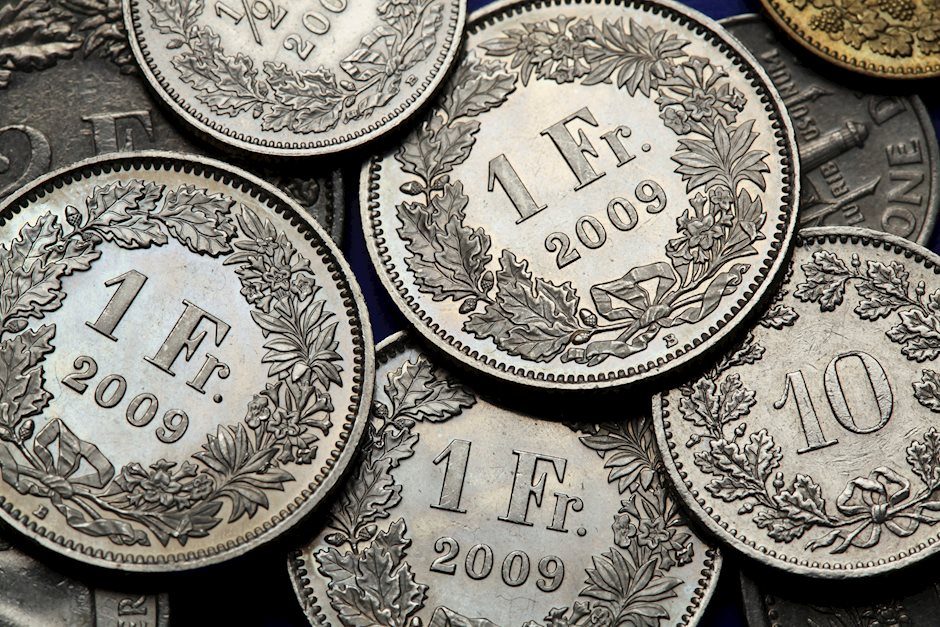USD/CHF trades with modest losses on softer USD, lacks follow-through amid risk-on mood
- USD/CHF edges lower on Friday and snaps a two-day winning streak to the weekly top.
- Dovish Fed expectations, sliding US bond yields weigh on the USD and exert pressure.
- The risk-on mood could undermine the safe-haven CHF and help limit any further losses.

The USD/CHF pair struggles to capitalize on its strong gains registered over the past two days and trades with a mild negative bias during the Asian session on Friday. Spot prices currently trade around the 0.8660-0.8655 region amid a modest US Dollar (USD) downtick, though lacks follow-through selling or bearish conviction.
Rising bets for a 50 basis points (bps) interest rate cut by the Federal Reserve (Fed) in September triggered a fresh leg down in the US Treasury bond yields. This, in turn, drags the USD Index (DXY), which tracks the Greenback against a basket of currencies, away from the weekly high touched on Thursday and turns out to be a key factor weighing on the USD/CHF pair. That said, the risk-on impulse is seen undermining demand for the safe-haven Swiss Franc (CHF) and acting as a tailwind for spot prices.
The better-than-expected US Initial Jobless Claims released on Thursday eased market fears about an imminent recession in the world's largest economy. Adding to this, Chinese data published on Friday showed that the headline consumer price index (CPI) edged up to a five-month high of 0.5% year-on-year in July. This could be seen as the initial sign of a pickup in domestic demand and further boosts investors' confidence, which is evident from a generally positive tone across the global equity markets.
In the absence of any relevant market-moving economic releases on Friday, the aforementioned mixed fundamental backdrop warrants some caution before positioning for any meaningful intraday depreciating move. Market players now look forward to the release of the latest US consumer inflation figures, due next Wednesday. The crucial data will play a key role in influencing the Fed's future policy decision, which, in turn, should provide some meaningful impetus to the USD and the USD/CHF pair.
(This story was corrected on August 9 at 10:00 GMT to say, at the first bullet point, that USD/CHF edges lower on Friday, not Thursday).
Fed FAQs
Monetary policy in the US is shaped by the Federal Reserve (Fed). The Fed has two mandates: to achieve price stability and foster full employment. Its primary tool to achieve these goals is by adjusting interest rates. When prices are rising too quickly and inflation is above the Fed’s 2% target, it raises interest rates, increasing borrowing costs throughout the economy. This results in a stronger US Dollar (USD) as it makes the US a more attractive place for international investors to park their money. When inflation falls below 2% or the Unemployment Rate is too high, the Fed may lower interest rates to encourage borrowing, which weighs on the Greenback.
The Federal Reserve (Fed) holds eight policy meetings a year, where the Federal Open Market Committee (FOMC) assesses economic conditions and makes monetary policy decisions. The FOMC is attended by twelve Fed officials – the seven members of the Board of Governors, the president of the Federal Reserve Bank of New York, and four of the remaining eleven regional Reserve Bank presidents, who serve one-year terms on a rotating basis.
In extreme situations, the Federal Reserve may resort to a policy named Quantitative Easing (QE). QE is the process by which the Fed substantially increases the flow of credit in a stuck financial system. It is a non-standard policy measure used during crises or when inflation is extremely low. It was the Fed’s weapon of choice during the Great Financial Crisis in 2008. It involves the Fed printing more Dollars and using them to buy high grade bonds from financial institutions. QE usually weakens the US Dollar.
Quantitative tightening (QT) is the reverse process of QE, whereby the Federal Reserve stops buying bonds from financial institutions and does not reinvest the principal from the bonds it holds maturing, to purchase new bonds. It is usually positive for the value of the US Dollar.
Author

Haresh Menghani
FXStreet
Haresh Menghani is a detail-oriented professional with 10+ years of extensive experience in analysing the global financial markets.

















